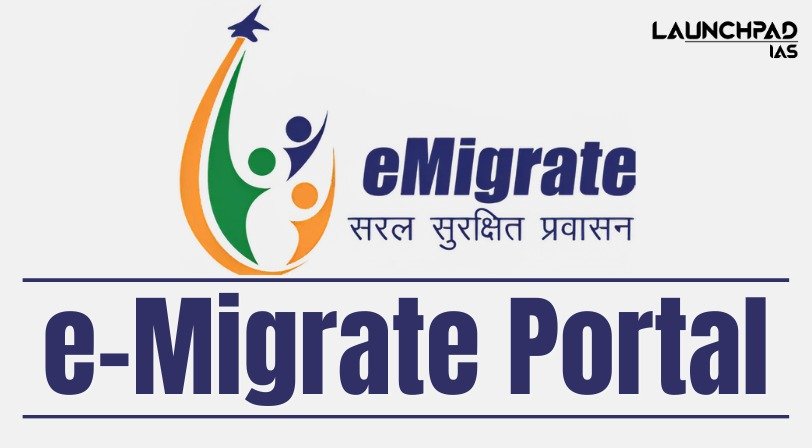- e-Migrate Portal is an online platform launched by the Government of India to facilitate and manage the migration of Indian workers seeking employment abroad.
- e-Migrate Portal aims to provide a safe and transparent framework for migrant workers by offering various services, including information access, documentation, helpline support, integration with services, and awareness campaigns
- e-Migrate Portal promotes safe and legal mobility channels for Indian migrants.
- The enhanced e-Migrate portal aligns with the United Nations’ Sustainable Development Goal 10, promoting orderly and responsible migration.
Features
- The upgraded platform offers 24/7 multilingual helpline support and a feature for feedback, ensuring timely readdressing of issues faced by workers abroad, especially in the Gulf region.
- The revamped system integrates with Digi locker, enabling secure, paperless document submission.
- Additionally, a partnership with Common Service Centres (CSCs) will expand immigration services to rural areas in local languages, enhancing accessibility.
- The e-Migrate Portal also supports job-seekers by offering a one-stop marketplace for overseas employment opportunities.
What is Migration?
About Migration
- The International Organization for Migration defines a migrant as any person who is moving or has moved across an international border or within a state away from his/her habitual place of residence.
- Examining the migration shifts in scale, direction, demography and frequency can lead to effective policies, programmes, and operational responses on the ground.
Factors Determining Migration
- It can be either voluntary or forced movements as a consequence of the increased magnitude or frequency of disasters, economic challenges, and extreme poverty or conflict situations.
Push and Pull Factors of Migration
- Push factors are those that compel a person to leave a place of origin (out-migration) and migrate to some other place such as – economic reasons, social reasons, or lack of development in a particular place.
- Pull factors indicate the factors that attract migrants (in-migration) to an area (destination) such as job opportunities, better living conditions, availability of basic or high-level facilities, etc.
What is the Significance of Migration and Migrants?
- Labour Demand and Supply: Migration fills gaps in the demand for and supply of labour, and efficiently allocates skilled labour, unskilled labour, and cheap labour.
- Skill Development: Migration enhances the knowledge and skills of migrants through exposure and interaction with the outside world.
- Quality of Life: Migration enhances chances of employment and economic prosperity which in turn improves quality of life.
- Economic Remittances: The migrants also send extra income and remittance back home, thereby positively impacting their native place.
- Social Remittances: Migration helps to improve the social life of migrants, as they learn about new cultures, customs, and languages which helps to improve brotherhood among people and ensures greater equality and tolerance.
What are the Challenges Related to Migration?
Issues faced by Marginalised Sections:
- Whereas the people who are poor or belong to a marginalized section do not find it easy to mix up.
Social and Psychological Aspects:
- Many times, migrants are not easily accepted by the host place and they always remain as second-class citizens.
- Any person migrating to a new country faces multiple challenges, from cultural adaptation and language barriers to homesickness and loneliness.
Exclusion from Political Rights and Social Benefits:
- Migrant workers are deprived of many opportunities to exercise their political rights like the right to vote.
- Moreover, the need to provide proof of address, Voter IDs, and Aadhaar cards, which is difficult due to the fluidity of their lives, deprives them of accessing welfare schemes and policies.


